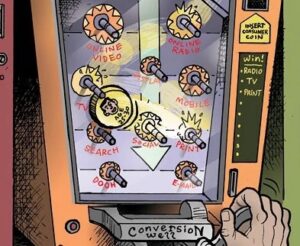“On TV And Video” is a column exploring opportunities and challenges in advanced TV and video.
Today’s column is written by Craig Berlingo, Product Lead for OTT and CTV at PubMatic.
With millions of people stuck at home watching streaming content, 2020 could have provided a chance for publishers to rake it in. Instead I am hearing from some publishers that a large portion of their OTT inventory went unfilled for some of the year.
The market is simply not ready for programmatic OTT as we have known it in digital, and with good reason. Even if the ad ops team is eager to grab the incremental yield opportunity, there are impacts to customer experience and inventory value.
Slow and steady wins the race
The early talk that OTT will finally allow advertisers to reach targeted audiences at scale in a TV-like setting is only partly true. Publishers would seem unlikely to have plans to participate in another “race to the bottom” by putting their unsold inventory in an open auction, only to see their ad inventory commoditized to a minimal CPM. As a result, it seems that digital advertisers that have prospered in the open web may find programmatic OTT prices that are closer to those of direct buys than they’re used to in programmatic display.
Publishers with premium OTT inventory are serving a different kind of buyer – namely brand advertisers. Brand buyers aren’t measuring clicks and conversions. Industry trends show they are moving money over from linear TV, where the context and audience experience matters a lot. These buyers may be more likely to pay the higher prices, but only if the quality is TV-level.
And, publishers with TV-level quality may be wooing very picky viewers, people who have grown up with seamless TV experiences where the signal is always good and commercials never lag.
So when these same publishers suddenly have a surge in viewers, simply opening the floodgates and letting any advertiser bid isn’t the right approach. Instead, they must find a way to incorporate the best of programmatic digital without sacrificing audience experience.
Maximize viewer lifetime value
Any digital native reading this last phrase might have just choked on their coffee. But it’s true. OTT publishers aren’t out to get someone to watch one more clip or read another click-bait article. They hope that someone watches a 30-minute show and then comes back next week to watch again. They hope that person watches next season, followed by the spinoff show. These OTT publishers should be playing the long game, and that means putting customer experience first.
That customer experience needs to be at least as good as TV, with seamless transitions between content and commercials, high quality advertising, and spots that load quickly and play smoothly. Ad pods shouldn’t include a high frequency of the same ad and they should seem somewhat relevant to a show’s content or its viewers’ lives.
Give brands what they want
Think of a match between an advertiser and a publisher as something taking place at an invite-only auction house, not a crowded outdoor market. It’s feasible to assume these advertisers want to ensure their high-CPM budgets are parked with premium publishers and avoid fraud. This means operating in more of a marketplace-like programmatic setting, not an exchange. In such a marketplace, advertisers will dictate requirements, such as competitive separation and frequency caps.
Header bidding-like functionality may offer a path forward, helping publishers apply buyer rules and dictate their own, such as a minimum acceptable commercial time. But header bidding in OTT will not be the same as in programmatic digital. Its value comes in the form of a unified auction offering transparency and control for the advertiser and the ability to maximize ad pod fill for the publisher. A server-side version improves speed and scale for both parties while protecting user experience.
Ops people are laying the groundwork today for healthy OTT strategies that preserve relationships with brand buyers, in turn preserving higher CPMs. Improved fill rates and higher yield should eventually follow – without breaking the audience experience.















